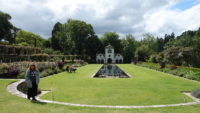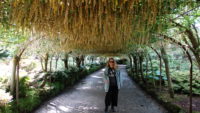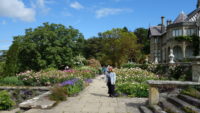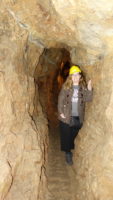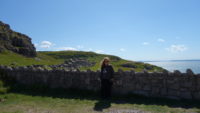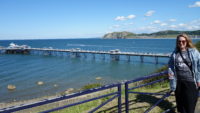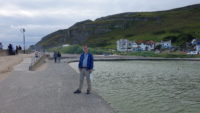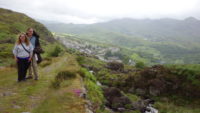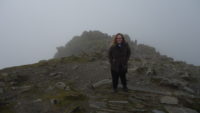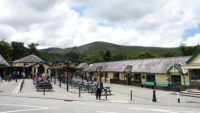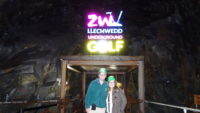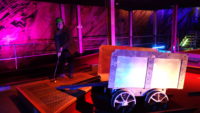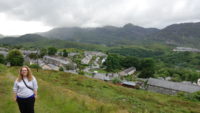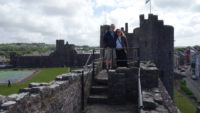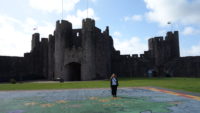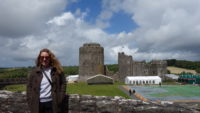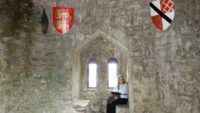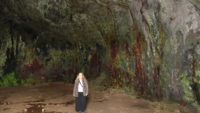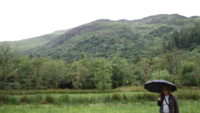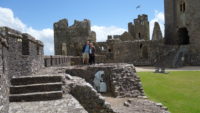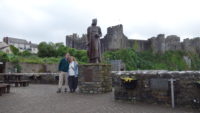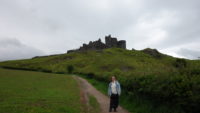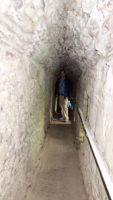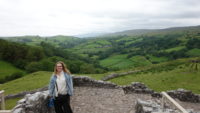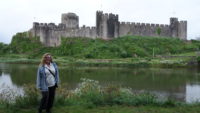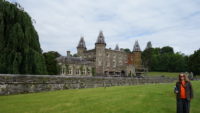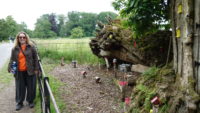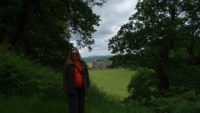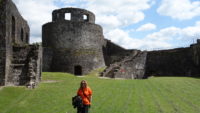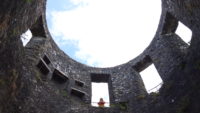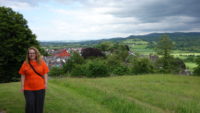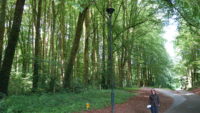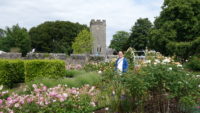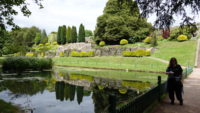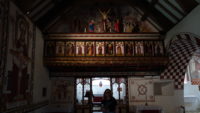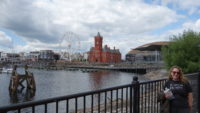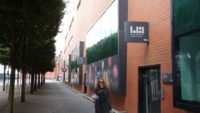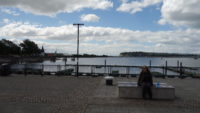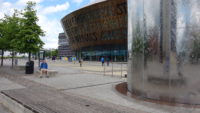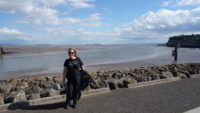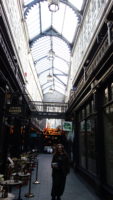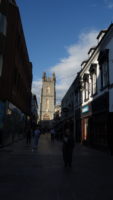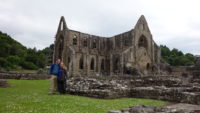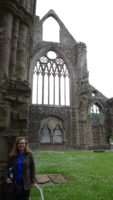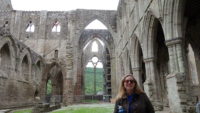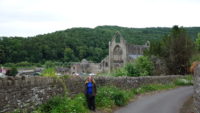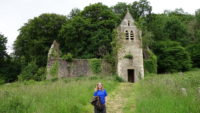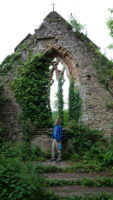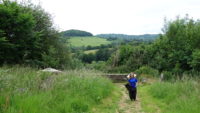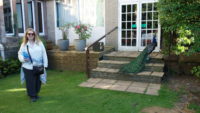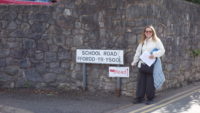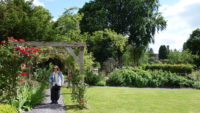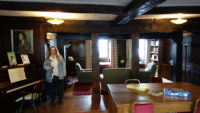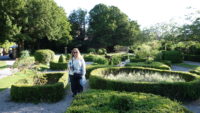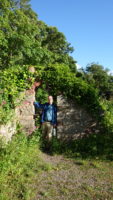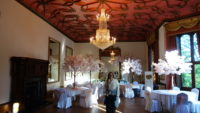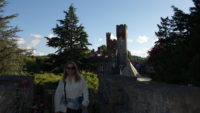 Travel sometimes brings you to the pinnacle of experiences and the breaking despair of roundabouts, and often not only on the same trip, but on the same day. On most trips, I have some breaking point where I just want to go home, usually at or after day twelve. Mer pointed out that this wasn’t the case last year in Lithuania, but I think that it was because the driving there was sane. After Wales frayed every driving nerve I had, Scotland chipped in today on our way through Glasgow.
Travel sometimes brings you to the pinnacle of experiences and the breaking despair of roundabouts, and often not only on the same trip, but on the same day. On most trips, I have some breaking point where I just want to go home, usually at or after day twelve. Mer pointed out that this wasn’t the case last year in Lithuania, but I think that it was because the driving there was sane. After Wales frayed every driving nerve I had, Scotland chipped in today on our way through Glasgow.
I knew that today was going to be a long driving day. We had to drive from Llandudno in northern Wales to Seamill, which is thirty-five miles west of Glasgow. That drive takes about five hours and fifteen minutes, so I figured six hours. I turned out to be a very long seven hours. But we were still in Llandudno in the morning, and I had just noticed that the cable car up the Great Orme was running.
 So of course my plan to drive to Seamill as early as possible got shelved. We packed up the car and walked the two-minute walk over to the cable car and saw a sign saying to go to the ticket booth, so we went down the hill to the store, where the woman said the store had nothing to do with the lift, so we went back up the hill to notice the “cash only” sign for the twenty-eight pounds we needed, counted out that we only had twenty-two pounds, went back down the hill to the store, were told that the nearest ATM was in town about a half mile away, walked into town, got twenty more pounds from and ATM, and walked the half mile back and up the hill to the ticket office. Simple.
So of course my plan to drive to Seamill as early as possible got shelved. We packed up the car and walked the two-minute walk over to the cable car and saw a sign saying to go to the ticket booth, so we went down the hill to the store, where the woman said the store had nothing to do with the lift, so we went back up the hill to notice the “cash only” sign for the twenty-eight pounds we needed, counted out that we only had twenty-two pounds, went back down the hill to the store, were told that the nearest ATM was in town about a half mile away, walked into town, got twenty more pounds from and ATM, and walked the half mile back and up the hill to the ticket office. Simple.
And so we got on the cable car, after the attendant threw out two (of three) sandbags. It seems there is some wind and the weight helps keep an empty car stable. Mer sat in one seat, and I sat in the other, with the plan of reversing the seats on the way back. The cable car run is a mile long, making it the longest cable car in the UK, and so it was a good, long ride. I like how quiet cable cars are – we went up over the cliff wall of the Great Orme, passing over a large garden we hadn’t known about and a small single ski hill with an alpine slide we had missed, and then we were over the fields of the Great Orme as sheep bleated all around us. It was beautiful and peaceful.
 We got off at the end of the line and hiked up the arduous ascent to the summit of the Great Orme, about twenty-five feet away, without oxygen tanks or Sherpas. Naturally, we posed for a photo. From that vantage point, Meredith saw and pointed out one of the major Edward the First castles across the bay in the town of Conwy. We looked around for ten minutes or so, and I briefly dropped my return ticket, and Mer got the spectacle of my chasing it around in the stiff breeze, but then we went back down to get in the car and head north.
We got off at the end of the line and hiked up the arduous ascent to the summit of the Great Orme, about twenty-five feet away, without oxygen tanks or Sherpas. Naturally, we posed for a photo. From that vantage point, Meredith saw and pointed out one of the major Edward the First castles across the bay in the town of Conwy. We looked around for ten minutes or so, and I briefly dropped my return ticket, and Mer got the spectacle of my chasing it around in the stiff breeze, but then we went back down to get in the car and head north.
For much of the trip, the major issue was fighting being sleepy. I like spoken-word recordings, but my older iPod with my podcasts had the wrong USB cable. Enter the rather wonderful BBC Radio 4. Radio 4 seems to be all spoken-word recordings, from storytellers to comedians to odd gameshows to old-time-style radio dramas. We listened to various shows for a good four hours or so, and it was a fun way to pass the time and miles.
Then Glasgow. Somehow my going to a hotel on the west coast required me to drive through Glasgow at 5:00. I got channeled off the highway unexpectedly as the two slow lanes dumped me into the city. Then I went the wrong way while my GPS was recalculating. Then I had stop-and-go city driving for several lights before getting back on the highway, only narrowly avoiding repeating the exact same sequence thanks to Meredith’s asking me if this wasn’t the same road. She warned me just in time.
A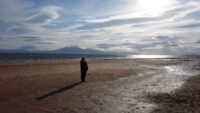 fter Glasgow and the highway, I got hit by the UK’s passion for roundabouts, where if you’re in the wrong lane, you can get channeled away from your real exit (as happened to me). And even if all goes well, it gets tiring having seventy-mph roads terminate in a rotary every two miles (this is annoyingly common). By the time we got to the hotel, I was exhausted, had sworn once (a heartfelt “damn”), and had pathetically replied to a Meredith question with “I don’t know. I just want to go home.”
fter Glasgow and the highway, I got hit by the UK’s passion for roundabouts, where if you’re in the wrong lane, you can get channeled away from your real exit (as happened to me). And even if all goes well, it gets tiring having seventy-mph roads terminate in a rotary every two miles (this is annoyingly common). By the time we got to the hotel, I was exhausted, had sworn once (a heartfelt “damn”), and had pathetically replied to a Meredith question with “I don’t know. I just want to go home.”
Happily, our hotel is quite swanky and is right on the sea. After a terrific supper looking out over the Firth of Clyde, we walked out along the beach for about forty minutes, admiring the islands and the light off the water.
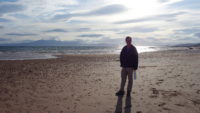 It’s been a great time here in the UK. It was good to see Dubbs, the Lake District, Lincoln, Wales, and Scotland. We’ve seen abbeys and castles and mountains and mines, and they have been wonderful and enlightening. But now I want to see my home, pet my cats, sleep in my bed, eat foods I know, and drive on the right side. Our flight leaves tomorrow at 8:30 am, which means we’ll be up a little after 3:00 am to get ready and drive to the airport. But that means, Lord willing, we’ll be home Tuesday evening and able to go to sleep at a normal time. And so, off to bed.
It’s been a great time here in the UK. It was good to see Dubbs, the Lake District, Lincoln, Wales, and Scotland. We’ve seen abbeys and castles and mountains and mines, and they have been wonderful and enlightening. But now I want to see my home, pet my cats, sleep in my bed, eat foods I know, and drive on the right side. Our flight leaves tomorrow at 8:30 am, which means we’ll be up a little after 3:00 am to get ready and drive to the airport. But that means, Lord willing, we’ll be home Tuesday evening and able to go to sleep at a normal time. And so, off to bed.
